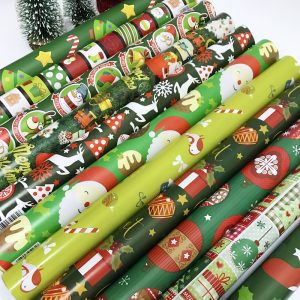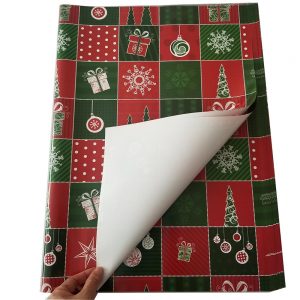Do you know? There are still many types of flower wrapping paper! It should be seen often in our lives. I believe this point should be obvious to all. Here is a brief introduction for you! If you If you are interested in our products, you can take a look.
1. Ouya paper (waterproof material-impermeable)
Ouya paper is opaque, bright and shiny on both sides. Due to its opacity, Ouya paper is available in two-color or single color, and the color matching of two-color Ouya paper is richer and has a sense of hierarchy.
2. Korean plain paper (waterproof material-slightly transparent)
Compared with matte paper, the transparency is lower, both sides are smooth, and there are also a variety of colors to choose from.
3. Matte paper (waterproof material-translucent)
The matte paper is water-resistant and not easily damaged like cellophane. It is translucent, and the surface is like a hazy fog, which is hazy and soft.
4. Hemp slices
hemp sheet has a “rough” appearance, and the porous fiber structure can add a unique texture to the flower package. It is usually used on the outside of the bouquet package, with Sydney paper or kraft paper as the lining.
5. Mesh
The density of the mesh is sparse and the texture is relatively thin. It is suitable for both inner lining and outer packaging, giving people a mysterious, ethereal and dreamy feeling.
6. Kraft paper
The packaging of kraft paper is very suitable for matching with pastoral and literary bouquets, creating an elegant and retro feeling.
7. Cowhide newspaper
Kraft newspaper has a unique sense of nostalgia than kraft paper. It is printed with text and looks like an old newspaper. It is also suitable for collocation with literary and retro bouquets.
8. Cellophane (waterproof material)
Almost all bouquets need cellophane. One of its main functions is to be used as a waterproof layer (water storage layer) for the bouquets. It can be used to wrap the bottom of the bouquets so that a small amount of water can be injected to keep the bouquets fresh.
In addition, as a wrapping paper, the transparency of cellophane (fully transparent or with patterns) allows the bouquet to be exposed without being blocked. It is generally used with other wrapping paper.
9. Sydney paper
Sydney paper is thin, white and translucent, and it is easy to knead into a ball to create a fluffy feel. It is generally used as the “lining” of the bouquet, and then it is matched with other colored wrapping paper. Adding “lining” to the bouquet adds the nobility and purity of the bouquet, like a delicate girl.
is especially suitable for collocation with hemp pieces, the delicate and soft inner and “rough” hemp pieces complement each other.
above are the 9 commonly used wrapping papers, and they can be used together. Give full play to your creativity. The combination of different materials and different colors can create a unique bouquet packaging style.




















